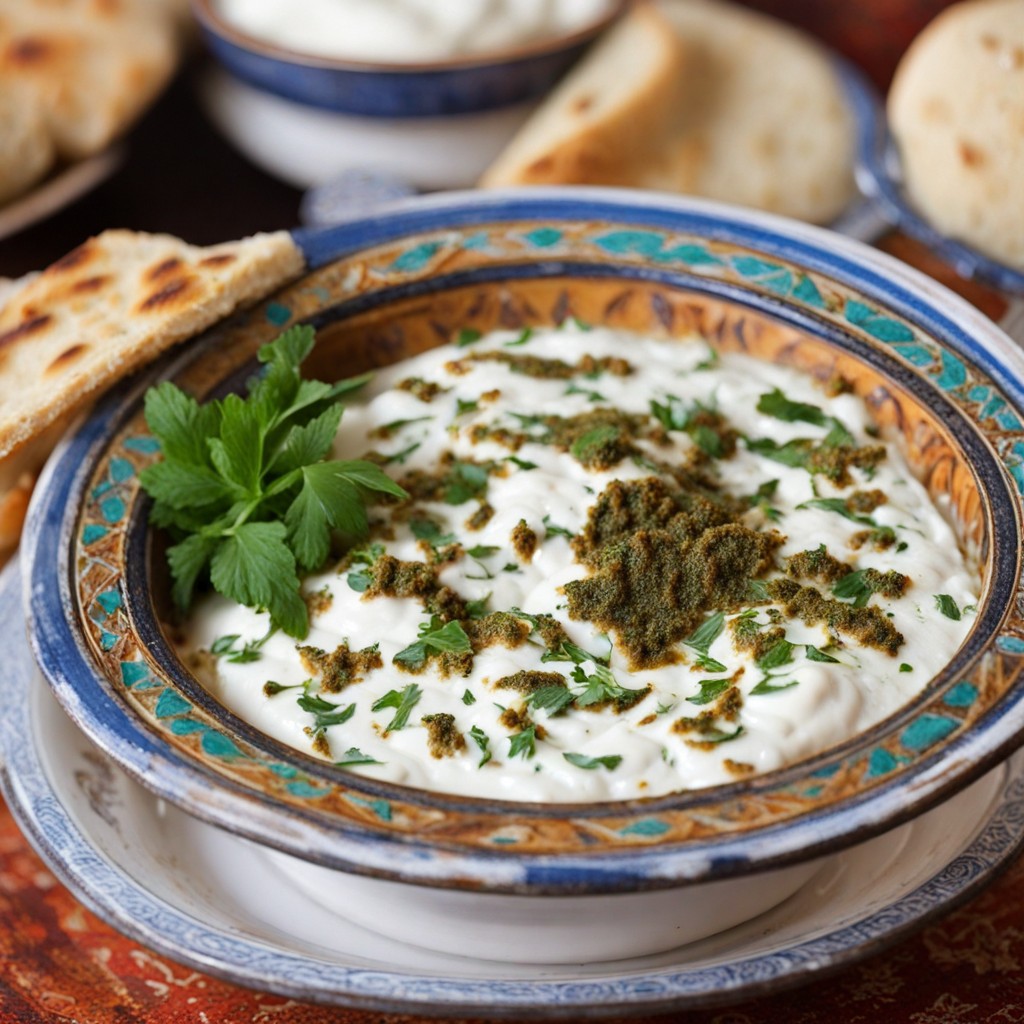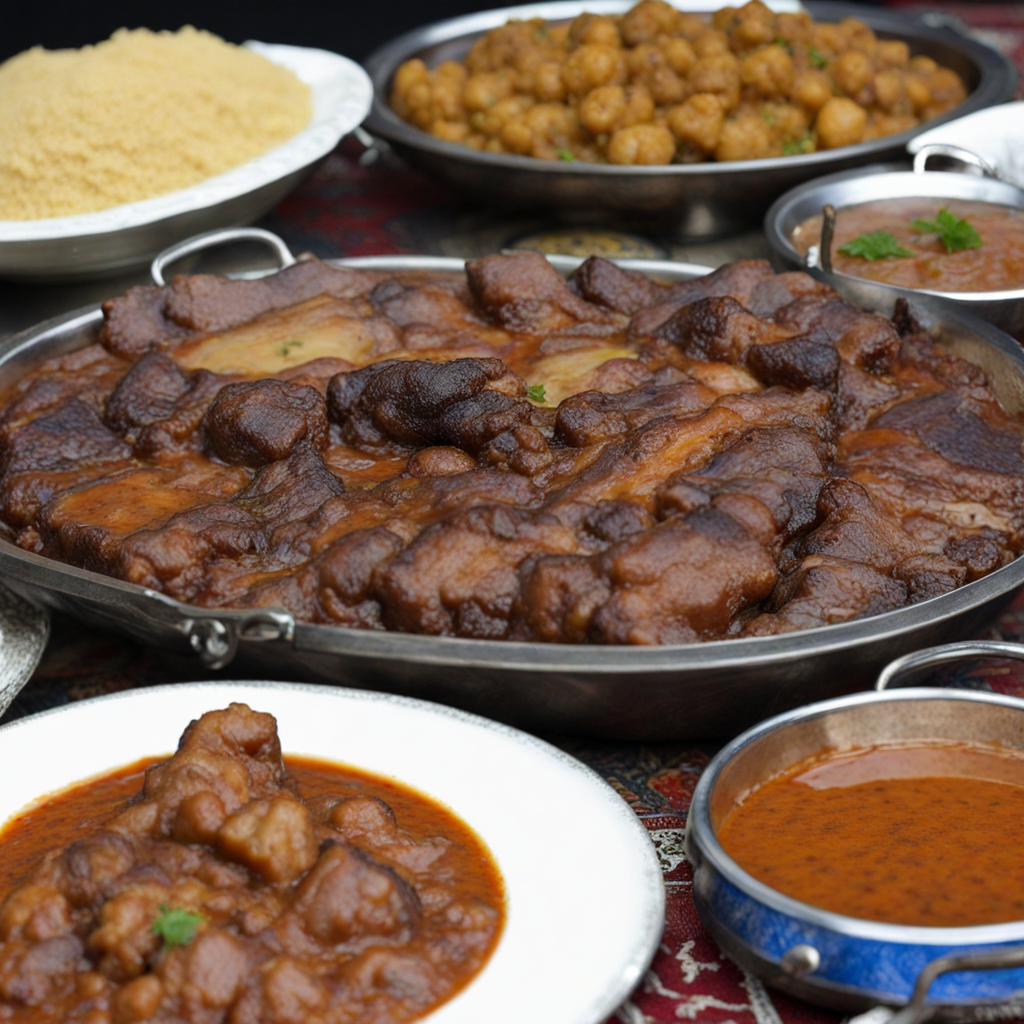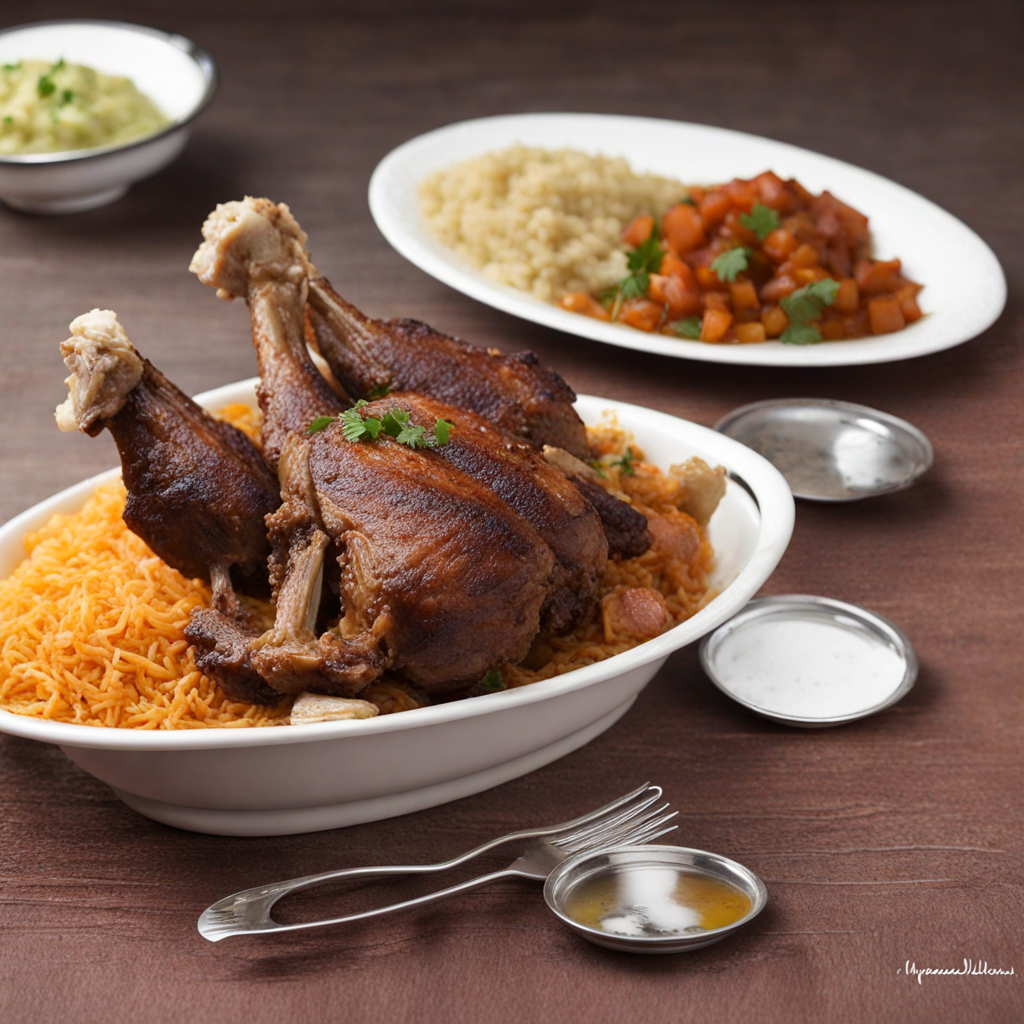Shafoot
Shafoot is a traditional Yemeni dish that beautifully blends the rich flavors of the region into a unique culinary experience. At its core, Shafoot consists of layers of flatbread, typically made from whole wheat or barley, which is soaked in a fragrant mix of yogurt and spices. The bread absorbs the tangy flavors of the yogurt, creating a delightful texture that is both soft and slightly chewy. This dish often incorporates a variety of spices such as cumin, coriander, and chili, which enhance its flavor profile, making each bite a burst of aromatic goodness that reflects the vibrant Yemeni culture. In addition to the bread and yogurt, Shafoot is usually topped with a medley of fresh vegetables, including tomatoes, cucumbers, and sometimes radishes, adding a refreshing crunch to the dish. The vegetables not only provide a contrast in texture but also contribute to the overall nutrition of the meal. Some variations may include the addition of tender pieces of lamb or chicken, which are marinated in spices and cooked until tender, further enriching the dish with savory flavors. The combination of the creamy yogurt and the spiced meat creates a harmony that is both satisfying and indulgent. What sets Shafoot apart is its communal nature; it is often served on a large platter, inviting diners to gather around and share. This aspect of the dish fosters a sense of togetherness, as everyone digs in and enjoys the various layers and flavors. The experience of eating Shafoot is not just about the food itself but also about the social interaction that accompanies it. As you savor each bite, you can appreciate the history and tradition behind this incredible dish, making it a perfect choice for anyone looking to explore the delicious world of Yemeni cuisine.
How It Became This Dish
The History of Shafout: A Culinary Gem of Yemen Origins and Ingredients Shafout, a beloved dish from Yemen, is a testament to the rich tapestry of Yemeni culture and cuisine. This traditional dish primarily comprises a base of thin, unleavened bread known as "lahoh" or "malawach," combined with a medley of ingredients that vary by region and personal preference. The core components usually include yogurt, tomatoes, green chilies, and a range of spices, often delivering a delightful blend of flavors that is both refreshing and satisfying. The origins of Shafout can be traced back to the ancient food practices of the Arabian Peninsula. Yemen has historically been a crossroads of trade, with influences from Africa, the Middle East, and South Asia. This intermingling of cultures has created a diverse culinary landscape, where simple ingredients are transformed into complex and flavorful dishes. The use of yogurt in Shafout reflects the ancient practice of fermenting milk, a technique common in many cultures, while the inclusion of spices and chilies highlights Yemen's long-standing trading connections with India and beyond. Cultural Significance In Yemen, food is not merely sustenance; it is a vital part of social interactions and cultural identity. Shafout is often prepared during communal gatherings, family celebrations, and festive occasions, serving as a symbol of hospitality and togetherness. The act of sharing a meal, particularly one as intricate as Shafout, fosters connections and reinforces bonds among family and friends. Moreover, Shafout is emblematic of Yemen's agricultural bounty. The ingredients used in the dish—fresh vegetables, herbs, and dairy—are often sourced from local markets, underscoring the importance of seasonal produce and regional flavors. This connection to the land and local farming practices imbues the dish with a sense of place, reflecting the unique geography and climate of Yemen, characterized by its mountainous terrain and fertile valleys. Development Over Time Historically, Shafout has undergone various transformations, evolving with the changing socio-political landscape of Yemen. During the Ottoman Empire's rule over Yemen, culinary exchanges proliferated, leading to the introduction of new spices and preparation techniques. This period significantly influenced Yemeni cuisine, with Shafout absorbing elements from neighboring cultures while retaining its distinct identity. The 20th century brought further changes, especially following the unification of North and South Yemen in 1990. This political shift led to increased interaction among various Yemeni communities, resulting in a culinary exchange that enriched traditional dishes. As people migrated and settled in urban centers, the preparation of Shafout adapted to new lifestyles. Urbanization saw the rise of street food vendors and casual dining establishments, where Shafout emerged as a popular choice for those seeking quick yet nutritious meals. The dish's adaptability made it a staple for busy families and working individuals, further embedding it into the fabric of daily Yemeni life. In recent years, the global interest in Middle Eastern cuisine has brought attention to Shafout, with Yemeni restaurants and food trucks introducing this delightful dish to a broader audience outside Yemen. The growing diaspora has also played a crucial role in preserving and promoting traditional recipes, ensuring that the cultural significance of Shafout remains alive in communities around the world. Social media platforms have facilitated the sharing of recipes, cooking techniques, and culinary stories, allowing for a virtual gathering space where both Yemeni nationals and food enthusiasts can celebrate this dish. Modern Interpretations and Global Influence As Shafout continues to evolve, contemporary chefs are experimenting with its ingredients and presentation. While traditional recipes remain cherished, modern interpretations may include fusion elements, incorporating flavors from other global cuisines. For example, some chefs might incorporate avocado or quinoa, appealing to contemporary dietary trends while maintaining the essence of the dish. This blending of traditions reflects a broader trend in gastronomy, where culinary boundaries are blurred, and the exchange of ideas is celebrated. The global popularity of Shafout also brings challenges, particularly in maintaining authenticity amid commercialization. As restaurants aim to cater to diverse palates, there is a delicate balance between innovation and preserving the dish's traditional roots. Many Yemeni families still prepare Shafout at home, holding onto the original recipes that have been passed down through generations, ensuring that this culinary heritage remains intact even as it adapts to modern tastes. Conclusion Shafout stands as a shining example of Yemen's rich culinary heritage, embodying the country's history, culture, and communal values. Its versatility and adaptability have allowed it to thrive in both traditional and modern contexts, making it a cherished dish among Yemenis and food lovers alike. As we explore the vibrant flavors of Shafout, we not only savor its ingredients but also the stories of the people and the land that brought this dish to life. In a world increasingly driven by fast food and convenience, Shafout serves as a reminder of the importance of communal dining and the joy of sharing meals with loved ones. It invites us to slow down, appreciate the flavors of the past, and celebrate the cultural connections that food fosters across borders and generations. As Shafout continues to evolve, it will undoubtedly carry with it the essence of Yemen—a country rich in history, resilience, and a profound appreciation for the art of cooking.
You may like
Discover local flavors from Yemen







